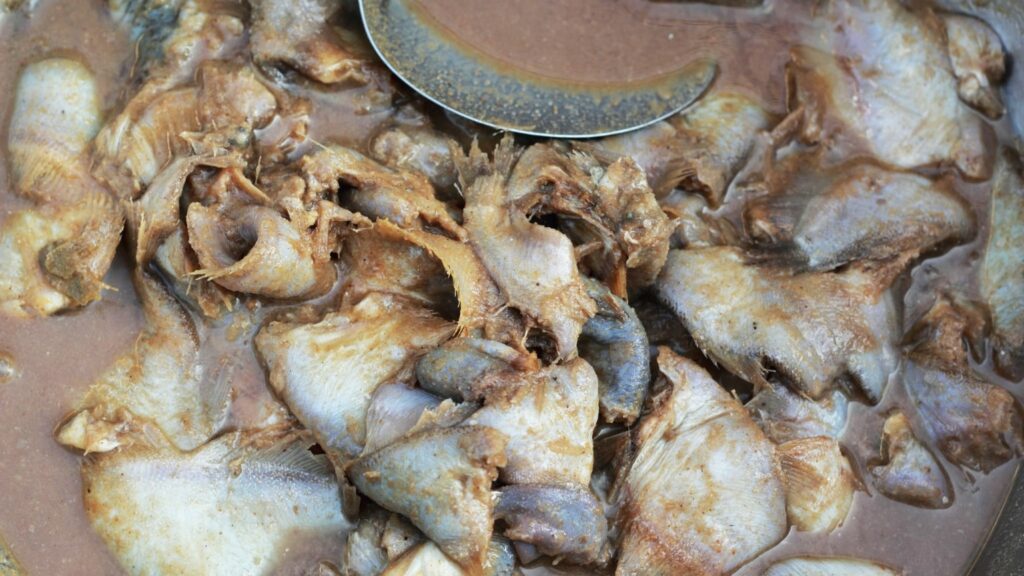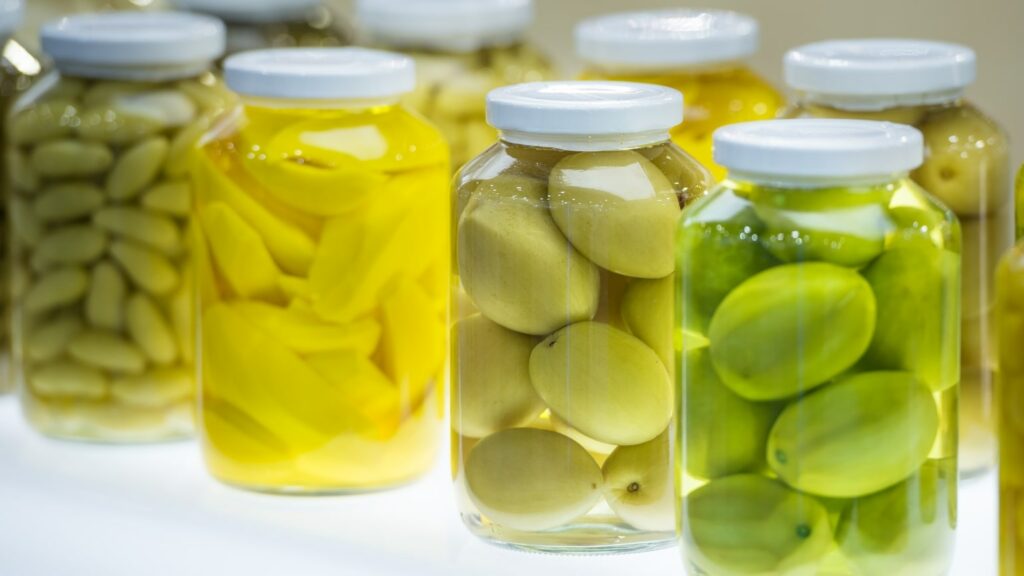Salt is an ingredient so ubiquitous in our kitchens that it’s easy to take its role for granted. However, its significance in the world of culinary arts is nothing short of remarkable. One of its most ancient and crucial applications is food preservation, a practice that has played a pivotal role in shaping human diets and cultures throughout history. In this article, we delve into the time-honoured tradition of preserving food with salt, exploring its methods, science, and lasting impact on global cuisine.
The Historical Roots of Salt Preservation

The art of preserving food with salt dates back thousands of years. Salt’s ability to inhibit the growth of microorganisms, including bacteria and fungi, was a boon to our ancestors who had to find ways to ensure food would last through lean times, seasons of scarcity, or long journeys. The earliest evidence of salt preservation can be traced to ancient China and Egypt, with both civilizations using salt to conserve fish and meat.
However, it was the Roman Empire that elevated salt preservation to an art form, coining the term “salting” or “salting down” to describe this practice. Romans used salt to preserve a wide range of foods, from meats like pork, beef, and fish, to vegetables and fruits. This method became essential to feeding armies on campaigns, seafarers during voyages, and populations during times of famine.
The Science Behind Salt Preservation
The effectiveness of salt in food preservation is attributed to its ability to draw water out of microorganisms, creating an environment where they cannot thrive. High concentrations of salt disrupt the osmotic balance within the cells of these microorganisms, causing them to lose water and eventually die. This process, known as osmotic dehydration, prevents spoilage and extends the shelf life of the preserved food.

Two common methods of salt preservation include dry salting and brining. In dry salting, salt is applied directly to the food’s surface, creating a salted crust. Dry salted foods like prosciutto, salted cod, or jerky are typically hung to air-dry, which further inhibits microbial growth. In brining, food is submerged in a saltwater solution, allowing for more even salt distribution. This method is used for preserving items such as pickles, olives, and some types of cheese.
Advantages of Salt Preservation
Salt preservation offers a range of advantages that have made it a time-honoured and effective method for keeping food fresh. First and foremost, it acts as a natural preservative by inhibiting the growth of microorganisms responsible for food spoilage, such as bacteria and fungi. When applied to food, salt creates an environment that is inhospitable for these microorganisms. It does this by drawing water out of their cells through the process of osmotic dehydration, making it nearly impossible for them to thrive.
As a result, salt-preserved foods can have extended shelf lives, allowing them to be stored and enjoyed over longer periods. This advantage was especially critical in earlier times when food preservation played a vital role in preventing spoilage and ensuring a steady food supply.
Another advantage of salt preservation is its ability to enhance and transform the flavour of foods. When salt is used in controlled amounts, it not only acts as a preservative but also functions as a flavour enhancer. It draws out moisture from the preserved item, intensifying its taste and creating unique textures. For instance, salted meats like prosciutto or corned beef are known for their distinctive flavours and textures, which are a result of the curing process.
Furthermore, salt can complement and balance the natural flavours of the food it preserves, resulting in a harmonious taste profile. The advantages of salt preservation, such as the preservation of food quality, are part of the reason why this tradition continues to be embraced in various culinary traditions around the world.
Disadvantage of Salt Preservation
While salt preservation has several advantages, it’s not without its disadvantages. One of the primary drawbacks is the potential for excessive salt consumption when consuming preserved foods. Many salt-preserved items, like cured meats and salted fish, can be high in sodium. An excessive intake of sodium can lead to health issues, including high blood pressure, which is a major risk factor for heart disease.
Therefore, individuals with hypertension or other conditions requiring a low-sodium diet should exercise caution when consuming salt-preserved foods. Additionally, a diet high in sodium can contribute to water retention, which may lead to swelling and discomfort.
Another significant disadvantage of salt preservation is the risk of nitrate or nitrite exposure. Nitrate and nitrite salts are commonly used in preserving meat products to prevent bacterial growth and provide a pink colour. However, under certain conditions, nitrate and nitrite can form nitrosamines, which are potentially carcinogenic compounds. The formation of nitrosamines primarily occurs when preserved meats are cooked or processed at high temperatures. While food safety measures are in place to minimize this risk, the potential health hazards associated with nitrosamines are a significant drawback of salt preservation. As a result, many food safety authorities have established regulations to control the use of nitrates and nitrites in preserved foods.
Types of Salt Used For Food Preservation
Salt is a versatile preservative, and various types of salt can be used for food preservation. The choice of salt often depends on the specific type of food and the desired result. Here are some common types of salt used for food preservation:
- Table Salt (Sodium Chloride): This is the most common type of salt used for preserving foods. It’s finely ground and dissolves easily. Table salt is typically used in pickling, brining, and as a curing agent for meats. Its small grain size ensures even distribution and a consistent brine.
- Kosher Salt: Kosher salt has larger crystals than table salt, and it is preferred for dry brining or curing meats. Its larger grains make it easier to control the amount of salt used. The absence of additives like iodine or anti-caking agents makes it ideal for preserving foods.
- Sea Salt: Sea salt is harvested by evaporating seawater, leaving behind the salt crystals. It comes in various textures, from fine to coarse. Sea salt can be used for preserving fish, and its distinct flavours can add unique characteristics to preserved foods.
- Himalayan Pink Salt: Mined from the Himalayan mountains, this salt is known for its pink hue and mineral-rich composition. It’s often used for dry curing meats and provides a subtle, earthy flavour to preserved foods.
- Curing Salt (Prague Powder or Pink Salt): Curing salts are a specific type of salt containing sodium nitrite or sodium nitrate. They are used in the preservation of meats, particularly for smoked and cured products like bacon, sausages, and ham. These salts help prevent bacterial growth and give the preserved meat its characteristic pink colour.
- Rock Salt: Large-grain rock salt is occasionally used for preserving foods that require longer-term storage, such as making preserved lemons or salt-cured egg yolks.
- Flake Salt: Flake salts have thin, delicate crystals with a light, flaky texture. They are often used as finishing salts but can be employed in some preservation techniques where a quick dissolution is not required.
Each type of salt brings its unique characteristics to the preservation process, influencing the flavour, texture, and appearance of the preserved foods. The choice of salt should align with the specific preservation method and the desired outcome.
Food Preservation Using Salt Examples

The impact of salt preservation on global cuisine is immeasurable. It has influenced a wide array of dishes, creating culinary traditions that remain celebrated today.
Salted Meats: In many cultures, salted meats are an integral part of the culinary heritage. Think of Italian pancetta or Spanish jamón serrano. Even American dishes like corned beef and pastrami find their roots in salted and cured meats.
Salted Fish: Salt cod is a staple in Portuguese, Spanish, and Scandinavian cuisine. In Portugal, it’s the key ingredient in bacalhau, which has over 1,000 traditional recipes.
Fermented Vegetables: Salt plays a crucial role in the fermentation of vegetables worldwide. Kimchi in Korea, sauerkraut in Germany, and pickles in the United States all rely on salt for preservation and fermentation.
Salted Cheeses: Feta, for example, owes its distinct flavour to being aged in brine. Roquefort and other blue cheeses are salted to create their unique textures and flavours.
Preservation of Exotic Flavors: Salt has enabled the preservation and transportation of exotic flavors, like the olives used in Mediterranean cuisine or the capers used in French and Italian dishes.
Modern Uses and Innovations of Salt Preservation
While the fundamental principles of salt preservation remain largely unchanged, modern food preservation has adopted new methods and technologies. Refrigeration, freezing, and canning have replaced salt preservation as the primary methods of keeping food fresh in many parts of the world. However, the tradition persists and continues to evolve.
Artisanal Revival: There’s a resurgence of interest in artisanal and traditional food preservation methods. Small producers are crafting salt-cured hams, fermented pickles, and brined cheeses, preserving not only food but also culinary heritage.
Salting Techniques: Modern chefs utilize salt in various forms and techniques, from dry brining meats to create juicy, flavorful roasts, to curing egg yolks to create intense umami-rich seasonings.
Reducing Salt Content: Health-conscious consumers and food producers are looking for ways to reduce the salt content in preserved foods. This has led to innovations like potassium chloride-based brines that mimic the effects of sodium chloride while reducing sodium levels.
Singapore Salt Shop
Elevate your culinary experience and preserve your favourite foods with our premium salts at Flaky Salt Singapore. In Singapore, where flavours come to life, our gourmet and speciality salts are the perfect choice. Discover the magic of food preservation through the art of salting. Shop now and embark on a journey to savour the tastes and traditions that only the finest salts can bring.
Conclusion
Salt’s role in food preservation is a testament to the ingenuity of humankind in ensuring that the flavours of one season can be enjoyed in another. From the humblest salted fish to the grandest cured hams, the art of preserving food with salt has had a profound influence on the world’s culinary traditions. Whether you enjoy the simplicity of a salt-cured olive or savour the complexity of prosciutto, the tradition of salt preservation connects us with the tastes and techniques of our culinary ancestors, creating a bridge between the past and the present on our plates.
